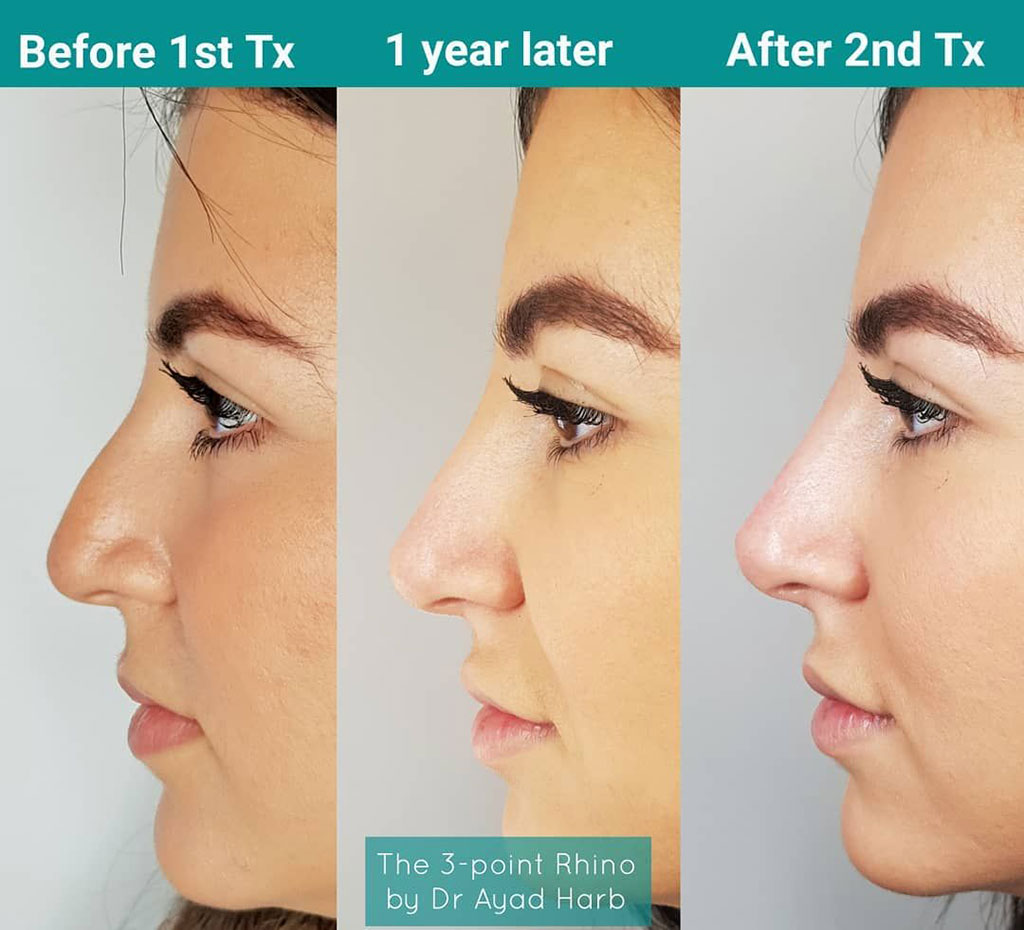
[ad_1]

Image: An example of liquid rhinoplasty (Photo courtesy of Dr. Ayad Harb)
Nonsurgical rhinoplasty using dermal fillers is a safe procedure with positive aesthetic results when performed by an experienced clinician, claims a new study.
Ayad Harb, FRCSPlast, a consultant plastic surgeon and world authority on liquid rhinoplasty, and Colin Brewster, MRes, of Queen Elizabeth Hospital (Gateshead, United Kingdom), conducted a study of nonsurgical rhinoplasty in 5,000 patients (mean age 27 years, mostly female), who were treated between March 2016 and January 2019 by Dr. Harb. Study parameters included patient demographics, indications, treatment details, and outcomes. Average procedure time was 12 minutes, with the average filler injected about 0.72 mL.
The most common patient complaint was a dorsal hump (44%), with about 20% of patients seeking to refine the results after a previous rhinoplasty surgery. Liquid rhinoplasty was also used to treat other patient concerns, such as drooping nasal tip (15%), lack of definition (almost nine percent), frontal asymmetry (seven percent) and bulbous tip (six percent). Hyaluronic acid was the preferred filler due to its reversibility in the event of vascular occlusion. Another benefit is that it can be pre-mixed with local anesthetic, avoiding the need for pre-procedural local anesthetic, which can distort or mask subtle deformities.
The results showed that erythema and swelling were a common observation in the first five days, but generally settled with time; other complications were infrequent. A small number of patients (0.5%) showed signs of vascular occlusion; in most cases, blood flow was restored with simple measures. If not, a hyaluronidase enzyme injection was performed to immediately dissolve the dermal filler. The results lasted for 9-12 months, with approximately 32% returning at 12 months, most of whom were treated again. The study was published the March 2020 issue of Plastic and Reconstructive Surgery.
“The injections are carried out at the radix and move caudally with a micro-droplet technique of boluses of no more than 0.1 mL at any one point. Frequently, and especially nearer the tip, deposits of filler can be as small as 0.02 mL,” concluded Dr. Harb. “With each injection point, the gel implant is massaged into place and can be maneuverer to produce a smooth and symmetrical surface. The injections continue in the midline until the tip is reached; the tip is injected perpendicular to the skin to improve projection and definition.”
Nonsurgical rhinoplasty with injectable dermal fillers has become an increasingly popular alternative to surgical procedures, in view of its relative low cost, convenience and rapid recovery, and low risk profile. Although the procedure is not intended to replace surgical rhinoplasty, it has proven beneficial in discrete cases of inadequate tip projection, dorsal hump, and low radix. Nonsurgical rhinoplasty has also been used to improve functionality of the nose by splinting the nasal valves.
Related Links:
Queen Elizabeth Hospital
[ad_2]
Source link